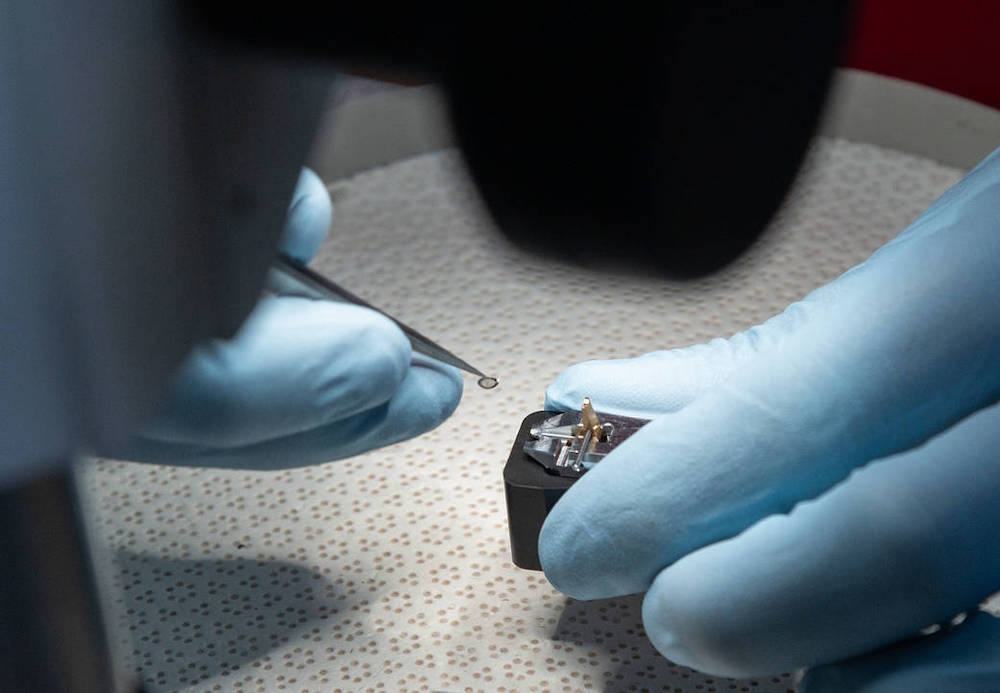Create a free profile to get unlimited access to exclusive videos, sweepstakes, and more!
Ryugu’s cosmic dust is some of the oldest stuff in the universe
When scientists say an asteroid has “some of the most primordial material ever examined,” it’s for real.

Asteroids and meteorites are cosmic time capsules. Some of them started out as debris knocked off protoplanets and proto-moons as they were forming. Others were the junk from solar system formation, hunks of rock that never reached planet or moon status.
Space rocks like Ryugu could take us back in time billions of years. Now that NASA has finally received its sample of the asteroid, which the Japanese space agency JAXA handed over after its Hayabusa-2 spacecraft made the return trip to Earth, the gray dust is already revealing secrets that have been hidden for eons. When actual scientists publicly declare the stuff in an asteroid is “some of the most primordial material ever examined,” you know it’s for real.
Some of Ryugu’s properties are close to those of known meteorites. Others seem downright alien compared to carbonaceous chondrites (carbon-based or C-type asteroids embedded with minerals) we already know exist. Zooming into a sample of Ryugu up close showed that the asteroid dust is made of a “hydrated matrix” that includes carbon-based compounds and clay along with ammonia-rich compounds that could someday give away its origin.
“The infrared spectra showing 2.72um (-OH) and 3.4um (carbonate and/or -CH) absorption features are similar to those of hydrated carbonaceous chondrites," researcher Toru Yada, who led one of the studies, told SYFY WIRE. "However, their reflectance spectra are darker than carbonaceous chondrites and their bulk density is smaller than carbonaceous chondrites."
To keep the pristine materials in the sample as pure as they were in space and prevent contamination from Earth’s atmosphere, it was sealed in a vacuum chamber full of purified nitrogen until it was ready to be dissected. Some things that the research, which was published in two Nature studies (here and here), exposed were expected from Hayabusa2 data. Observations already showed highly porous rocks scattered across its surface. This asteroid is also dark. It was no surprise that the sample was only able to reflect 2-3% of light that hit it.
Something the researchers didn't expect was how the Ryugu dust was some of the darkest asteroid material ever looked at on Earth. Other things in that hydrated matrix it was found to be made of were discovered through hyperspectral microscopy. This method literally sheds light on the rock’s physical and chemical properties by aiming different wavelengths of visible and infrared light at it while capturing hi-res images. For example, different types of surface morphology could mean that materials of different ages and compositions were smashed together to form Ryugu, possibly from impacts it experienced in the early solar system. Another aspect of the asteroid Yada didn't expect was its density.
"We are so surprised to find that the calculated bulk density of the Ryugu sample is smaller than any other meteorites," he said. "And it should be noted that we could not find any high temperature components like chondrule nor Ca-, Al-rich inclusion."
Without being invasive or destructive, the NASA and JAXA scientists were also able to find out the densities of Ryugu particles. This was one of the factors that differentiated it from regular C-type asteroids. They found the bulk density of these particles was lower than what it should be for C-type carbonaceous chondrites, though how porous they were was consistent with Hyabusa2 observations from the spacecraft’s Thermal Infrared Imager (TIR). Some gases and particles that passed through these pores could be evidence of Ryugu’s evolution.
"One of the possible causes of the porosity of Ryugu samples is thermal fatigue, as well as space weathering and regolith gardening occurred on Ryugu's surface, could have enriched cracks in them," said Yada.
The samples will be further analyzed with synchrotron X-ray dating later this year. This will allow researchers to see microscopic pores and make out their shapes, which could be another hit at how and where the asteroid formed, as well as what its original shape was before it found itself endlessly crashing into things during the tumultuous early days of the solar system. Such pores could also reveal more about its evolution as well as the amounts of water and organics it brought to Earth from who-knows-where.
If this is just scratching the surface of Ryugu, primordial secrets that could possibly prove or disprove solar system formation theories could be hiding inside this time capsule.


























